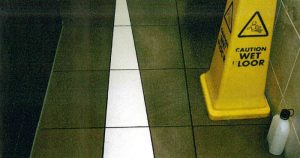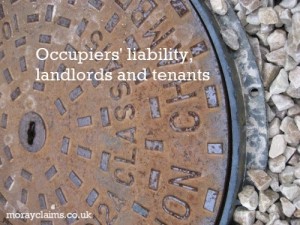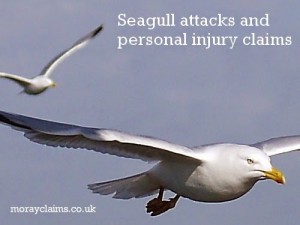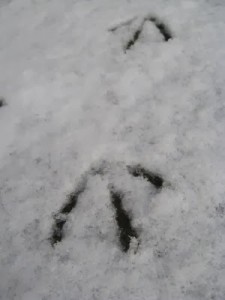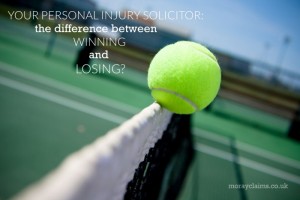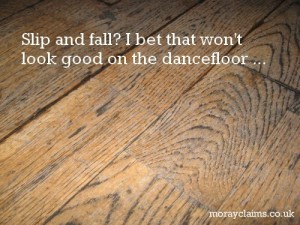Ms S visited a fast food restaurant in Elgin at the end of a night out. She needed to use the customer toilets. She went through the door from the restaurant into the ceramic-tiled corridor which led to the toilets. Though she did not notice the fact until after she had fallen, the floor was wet. This caused her to slip. As a result of her fall, she suffered an injury to her back. A "wet floor" sign was put out in the corridor, immediately following her accident. She reported her accident to a member of staff at the time but it was not until the next day that she realised the severity of the injury. She had the presence of mind to write a letter to the manager of the fast food restaurant informing him of the fact and details of her accident. Grigor & Young made a compensation claim on Ms S’s behalf, in this case. At all times, liability was denied. The fast food restaurant did not accept that, in fact, the floor had been wet at the time. They did not accept Continue Reading
Supermarket Slipping Accidents
Growing up in the U.S. in the middle of last century, Irving Naxon’s mother told him stories of her own childhood in a small village in Lithuania. Every Friday afternoon, she took a pot of uncooked stew to the local bakery, where it was placed in the oven. While everyone observed the Jewish Sabbath on the Saturday, the dish simmered in the slowly cooling oven. By evening, it was cooked to perfection and ready to be collected and eaten by the family. Naxon was inspired by this story and, throughout the 1950s and 1960s, sought to develop a way of cooking which was both economical and environmentally friendly. His invention was the Naxon Beanery – a pot surrounded by a heating element which mimicked the cooking method from the Eastern European bakery. The ‘slow cooker’ was born. When Naxon retired in 1971, he sold his business. The new owners refined the cooker’s design and renamed it the Crock Pot. Today, crock pots are integral to American cooking: they’re low-effort, efficient and Continue Reading
Slip / Trip Accidents And Why The Location Matters
If you have ever fallen over, you’ll know that embarrassment is often the overwhelming feeling, at first. After a trip or slip in a public place - such as a busy supermarket, shopping centre or street – we will tend to pick ourselves up quickly and make as fast an exit as possible, even if we are hobbling on our way. An accident of this type may be a pure accident – no one’s fault but your own – such as a trip while you are walking and updating your Facebook status at the same time. Even a momentary distraction can be enough to cause a fall. On the other hand, if your fall is due to someone else’s negligence (such as the occupier of land or a local authority), you may be able to make a claim for compensation for personal injury. This article considers slip / trip accidents and why the location matters when applying the law to the circumstances and deciding whether any personal injury claim is likely to succeed. Common accident claim locations For there to be the Continue Reading
Occupiers’ Liability, Landlords and Tenants
Occupiers' liability may apply where a defective drain cover causes an accident on premises In this post, we are looking at situations where you might have a claim for injury following an accident on premises owned or occupied by someone else. In Scotland, the Occupiers’ Liability (Scotland) Act 1960, requires occupiers of premises to take reasonable care for people who come onto their premises to see to it that they are not injured due to the state of the premises. While this is a statutory duty, because the obligation imposed is to take reasonable care, you still have to prove fault, as under the general law of negligence. Often this will mean it is necessary to gather evidence about how long the hazard in question had been in existence before the accident. The argument you have to counter is that, if the defect had not been there for very long before the accident, there was not sufficient time for the occupier to identify it and repair it before any accident happened and so Continue Reading
Seagull Attacks and Personal Injury Claims
Seagull attacks on humans are most likely in Scotland in the period May to July each year Injuries caused by dogs and other animals can give rise to successful personal injury claims. But what about an injury caused by a seagull? This is what a judge in the Court of Session had to consider in Cathie Kelly’s claim against the owners of the building – an old Victorian school - in Greenock, where she worked. Swooping seagull As she was going out of Ladyburn Business Centre (“LBC”) to get her lunch, an adult seagull dived at Mrs Kelly with outstretched wings. The bird did not injure her directly; instead, she hurt herself in her effort to get out of its way, as she stumbled and fell. She claimed that the building owners failed to take reasonable care for her safety. Her claim was based on occupiers’ liability and – because she was at work at the time – health and safety regulations. Seagulls protecting their young In Scotland, and certainly in Moray, you don’t even have to live at Continue Reading
Snow and Ice: Pedestrian Slipping Accidents
We have recently looked at claims for injuries to drivers caused by vehicle slipping accidents in wintry conditions and now it’s time to look at claims by pedestrians in similar circumstances. Slips on premises - reasonable scope for a claim If you slipped on premises where the owner or occupier is responsible for keeping the property free from snow and ice, you may have a claim against them under the Occupiers’ Liability (Scotland) Act 1960. Slips while you are working - reasonable scope for a claim Slips due to snow and ice while at work may be covered by health and safety regulations, though you need to note the uncertainty arising from the changes brought about by the Enterprise and Regulatory Reform Act 2013. There may be reasonable prospects of a successful claim even if the accident did not occur on property belonging to your employer. Slips in the street - or "public liability" slips - poor chances of success The most common scenario, however, is where you have been out Continue Reading
Golf Ball Injuries: A Fair Way To Treat Golf Clubs?
In Scotland, there are more than 550 golf courses and Moray has 9 of them. I’m a (sadly, very inactive) member of Moray Golf Club (Lossiemouth), which has two fantastic links courses. An appeal decision of the Court of Session from March 2013 has health and safety implications for golfers and golf clubs all over Scotland. The Facts of the Case The case of Phee –v- Gordon concerned an inexperienced golfer (Mr Phee) who sued Niddry Castle Golf Club in West Lothian and a member of the golf club (Mr Gordon) as the result Mr Phee losing his left eye after being struck by a golf ball from a wayward tee shot hit by Mr Gordon. Arguments that Mr Phee was partly to blame for his injury were rejected by the court. However, the appeal was successful in that Mr Gordon convinced the court that the blame which had been apportioned as 30% to the golf club and 70% to Mr Gordon following the initial hearing of evidence should be reversed – and more - on appeal. In other words, though the Continue Reading
Your personal injury claim solicitor: the difference between winning and losing?
Terence Connelly suffered a serious injury to his arm. He fell while playing tennis on a carpeted court at a leisure centre in Renfrew. One of his feet got stuck in the surface and he fell heavily. It appears that he had on the wrong kind of tennis shoes. It turned out there was a special type of shoes he should have been wearing, though he did not know that at the time. Mr Connelly made a personal injury claim against the leisure centre. He pointed to the fact that, following the accident, signs were put up at the centre stating: “Non-marking smooth-soled tennis shoes on carpet courts”. His action was unsuccessful in the Sheriff Court before first the Sheriff and then on appeal to the Sheriff Principal. He further appealed to the Court of Session but that appeal also failed. He conducted all three hearings in the case himself. In essence, the claim was unsuccessful because the various judges did not feel able to say that, on the available evidence at the date of the Continue Reading
Slip and fall? I bet that won’t look good on the dancefloor …
Dancefloors can be dangerous places. The combination of spilt drink, variable lighting and alcohol consumption means that falls can easily happen. Broken wrists are the most popular injury in our experience but leg injuries are also common. Claims based on occupiers' liability If you have been injured in this sort of situation, following a slip and fall, it may be possible to make a claim based on Occupiers’ Liability. The occupier – basically whoever has control of the premises – has to take reasonable care to see to it that people are not injured due to the state of the premises – which includes wet floors. Wet surfaces are not necessarily slippery? Unbelievable as it may seem, the courts have actually said that it is not self-evident that a wet surface is “slippery”. If liability for an accident is denied it can be necessary to get an engineer to carry out a slip-resistance test on the surface in question to provide a scientific measure of whether the floor poses a low, Continue Reading
